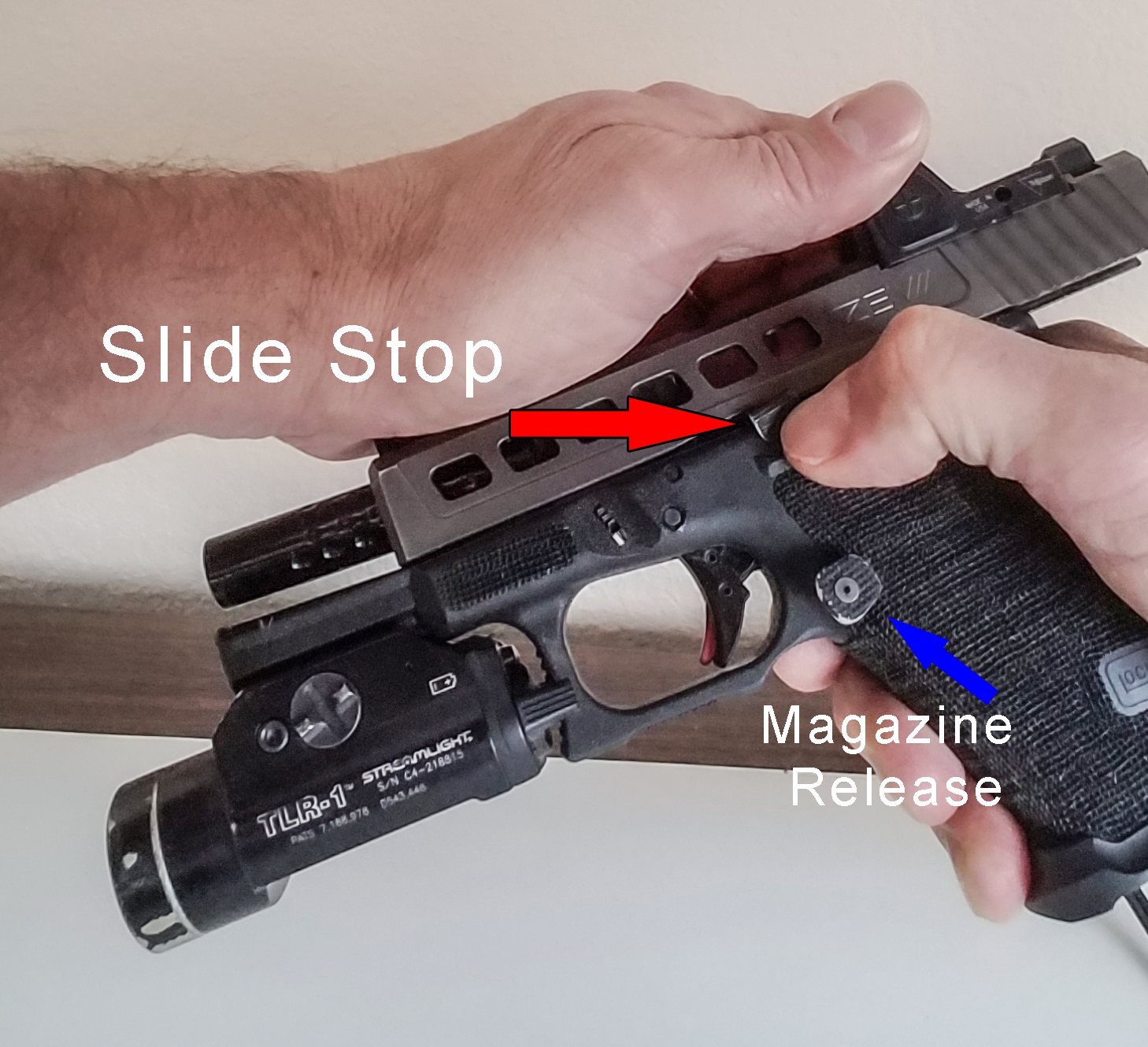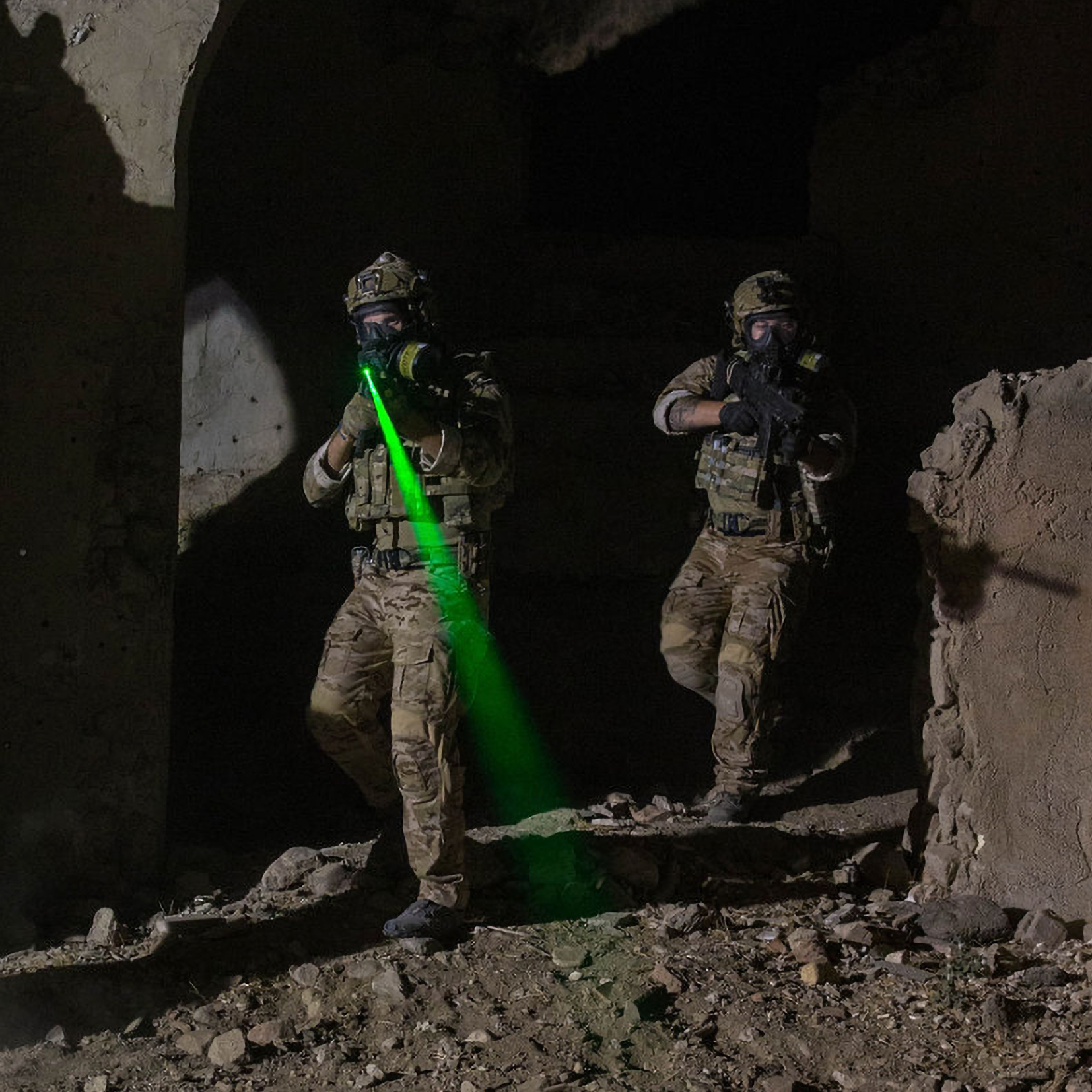Load Sequencing, so you've never heard of this before. If you are like me, you're reading the post to see if there is anything of substance here. You'll give it a quick glance to ensure there isn't and then you'll move on, am I right? I'm assuming you don't have much patience for something wonky. So, what I'm going to do is cut to the chase and give you the gist of Load Sequencing and then I'll go into more detail about it. Hopefully, I'll capture your attention and you'll keep reading, but more than that I hope you'll adopt it because it makes sense.
Here's the gist of Load Sequencing, its all about clearing malfunctions faster. Yep, you got that right. The manner in which you load and unload the gun can actually help you clear malfunctions faster. How is that you ask?
Tap-Rack-Bang takes me about 1.5 seconds and it should take you that long as well. If that doesn't work I jump right to my Remedial Action and that takes about another 3 seconds. In about 5 seconds I will clear every malfunction that commonly occur on Glock pistols. Granted, the micro guns are a bit tougher because they are so small, but its still doable.
During courses I run I like to show people how fast they can be too and I can just read the reaction on peoples faces, they're like yeah, he can... Trust me you can do this as well and its much easier than you think. It really amounts to working smarter instead of harder.
Like so many things, the secret is repetition. So, I can practice malfunctions a lot, which kind of sucks. I can't say it's a bunch of fun. Or, I can practice most of the mechanics required to clear a malfunction every time I load and unload the gun. Its the same with my AR15, if I'm unloading the first thing I do is lock the slide back, or lock the bolt back. If I'm loading the Glock or my AR15 the first thing I do is lock the slide back or lock the bolt back. So, I'm getting in a lot of reps when it come to locking back the slide on the pistol or the bolt on the rifle.
I'm going to remain focused on the Glock type pistols for now. Many other pistols are similar enough to the Glock that everything I'm stating here will work just fine for you.
Follow me, lets take a Glock pistol for example. When I experience a malfunction my first course of action is, Tap-Rack-Bang, which fixes most malfunctions and it takes me about 1.5 seconds to perform Tap-Rack-Bang. When that doesn't work I resort to the Remedial Action. The first step in performing the Remedial Action is locking the slide back. To do this I need to pull the slide back and while holding it back push the slide stop up into the notch on the slide. Some people have never done this! Especially women, they don't like to mess with locking the slide back and they might be fairly experience shooters. But trust me, when they encounter a malfunction that requires that you lock the slide back they suddenly fall apart, removing the magazine, racking the slide and the jam persists.
When I teach people how to do this during the courses I run I get the feeling they don't believe they can do it. They also cut themselves short and don't adopt the process that I'm teaching them, they go back to the same ol NRA way. SLOW. Look, if the idea of staying alive during a gunfight is appealing to you, you might want to pick this up because speed and accuracy are everything. I could write a dissertation on how important speed and accuracy are, but you know? People like to settle for what is good enough, "that's the way we've always done it". So, if you're like that just stop reading here.
Load Sequencing Glock Semi-Automatic Handguns
Disclaimer: Consult the owner’s manual and familiarize yourself with your gun and nomenclature before performing the prescribed load sequencing. The process described (here) will also work on other handguns with the same or similar features. Using dummy rounds to practice is a good practice and never use live ammo to practice things such as this. Safety is paramount. Clear all live ammunition from the room you are practicing in.
* While practicing Load Sequencing there is no reason to place your finger on the trigger.

1) While pointing the gun in a safe direction lock the slide back using Slide Stop located midway on the side of the frame.
Technique: grab the gun as shown in the figure above and push the hands towards each other as shown by the blue arrows, while at the same time gently pressing up on the Slide Stop with the thumb, as shown by the red arrow.
Once the Slide Stop is gently pressed into the notch on the slide, slowly release the slide allowing it to go forward; it will stick and remain locked back because the Slide Stop is in the notch. This also happens automatically upon firing the last round in the magazine, the slide will remain locked back.
2) Insert an empty magazine or a magazine loaded with dummy rounds. Do not slam it, firmly press it in and listen for a faint click indicating it has locked in properly.
3) Releasing the slide. There are two ways to do this, the sling-shot technique, or use the Slide Stop.
Sling-shot the slide to chamber a round by using the thumb and forefinger to grab the rear portion of the slide, pull and release. Let it go, don't ride it forward.
Using the Slide Stop to release the slide is faster, period. Not included in this post is information on how to perform a 2 second mag change reliably every time. Nearly all police officers sling shot the slide. None of the best competition shooters sling shot the slide. This is in itself an example of Institutionalized Inertia.
Institutionalized Inertia - essentially, it's that old adage, this is the way we've always done it, or it isn't broken, so why fix it?is not accepting of a new way of doing things even when the information, or evidence suggests it makes sense to make a change. Often, ego is responsible for hanging onto the old way of doing things. Whether its politics, religion or just a technique for loading and unloading firearms people tend attach their personal identity to things.
Summary
In Load Sequencing, the reason for locking the slide back first when loading and unloading is because that is the first step when performing the Remedial Action process. So, every time we load and unload the gun we are practicing the mechanics of performing the Remedial Action to clear a jam. Through repetition we ingrain the process, creating and reinforcing neural pathways in the brain. When a malfunction is encountered it is performed immediately and without hesitation, getting the fighting gun back online as quickly as possible.
Personally, I believe there is a best way to do virtually everything. I began clearing jams on my AR15 a certain way back in the 90's, which entailed going straight to locking the bolt back. I never waste my time with tap-rack-bang because it's a waste of time. Remember, Load Sequencing is all about clearing jams faster. I can guarantee you that in the heat of the moment when rounds are cracking by your head you won't be thinking of the different types of malfunctions and how to clear each one. What we need are processes that we jump to that are performed with little or no conscious thought. This frees up our conscious minds for things like situational awareness.
Personally, I stopped using terms like Load and Make Ready. I went to the Vietnam era term Lock & Load, because it more accurately describes Load Sequencing.
Locking the slide back, inserting the magazine and releasing the slide is a more reliable loading process. Some may debate this, but after 30+ years I've found it to be true. However, remember the real magic in Load Sequencing is ingraining the mechanics of performing the Remedial Action process in about 1/2 second.
In terms of safety, I was taught in the military to remove the source of ammunition first, which would be the magazine of ammunition. However, it isn't unsafe to lock the slide back first, or lock the bolt back on the AR15 and then remove the magazine. Either way is equally safe. *Always visually check the chamber when clearing a firearm.
The Load Sequencing process takes advantage of how we learn and repeat what we've learned under stress. Repetition equates to reliability in combat. You can stick with the old way of loading and unloading which serves no purpose other than to chamber a round, or you can subscribe to Load Sequencing, which serves a greater purpose. Get those reps in and practice for a malfunction every time you load and unload. Work smarter not harder.



1 comment
Leave a comment
This site is protected by hCaptcha and the hCaptcha Privacy Policy and Terms of Service apply.